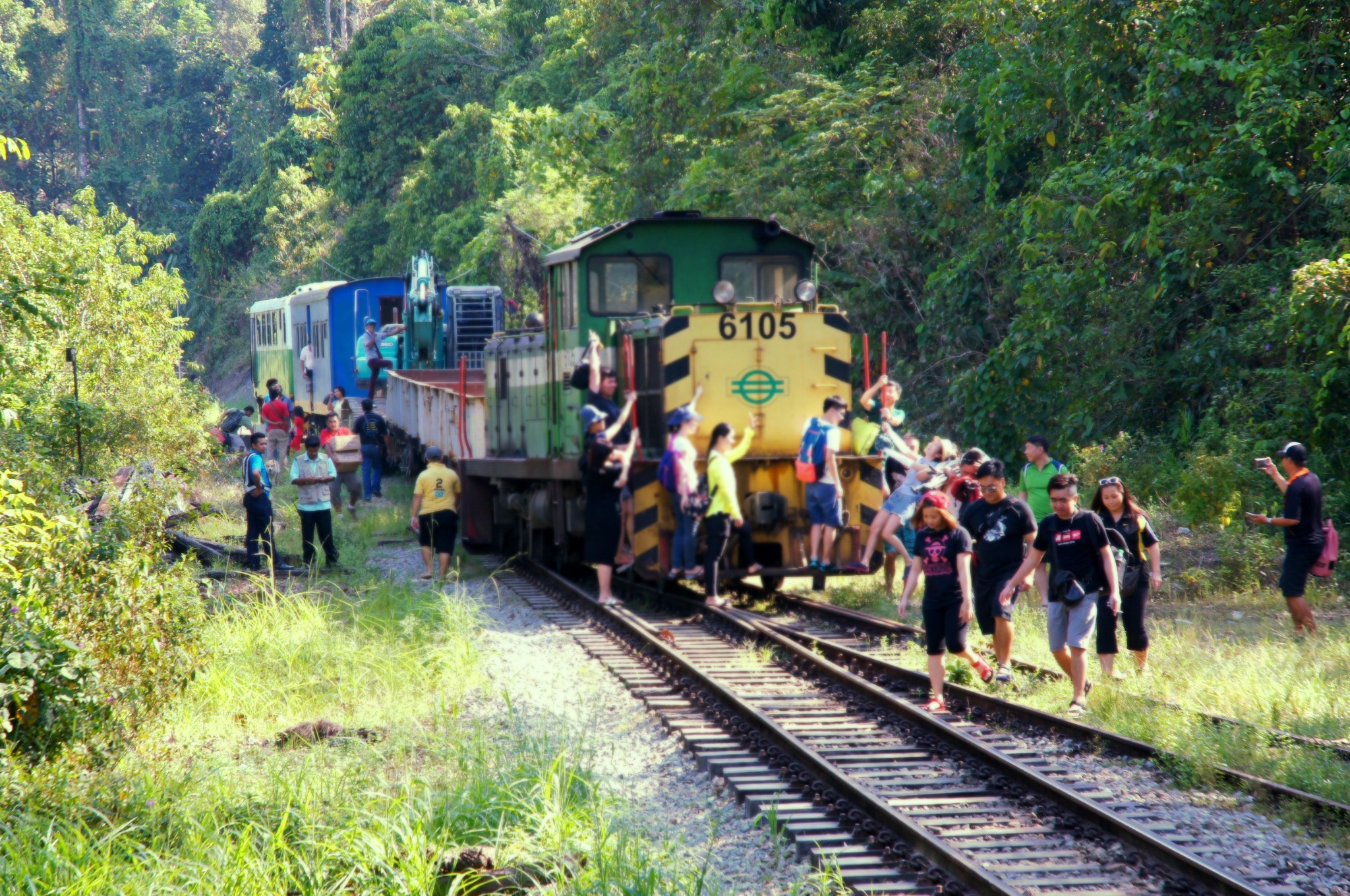Back in 2016, my wife and I along with a good buddy of ours, took a ride on a train that felt like it belonged to another era. The Beaufort to Tenom line is one of the last few “old-skool” railways in Malaysia, and the experience was so raw, so different, that it ended up being featured in Malindo Air’s inflight magazine. But more than that, it stayed with me personally, and I thought it deserved to be rewritten here today for memory’s sake.

When people think of trains in Malaysia, the image that usually comes to mind is the sleek ETS cutting across the peninsula, or the KTM Komuter shuttling tired office workers home. Air-conditioned cabins, assigned seating, polished platforms. Efficient, predictable.
Now imagine the opposite. A train where ceiling fans stir the air instead of air-conditioning, where sacks of rice and live chickens share space with schoolchildren, where people lean out of open windows to feel the wind. That is the Beaufort to Tenom railway. It may not have speed or polish, but what it does have is character.
Starting Point: Beaufort Station
Our journey began at Stesen Keretapi Beaufort, a modest outpost that felt more like a community gathering point than a transport hub.

The monument outside, with its rusted wheel axle, quietly reminded us that this railway has been here for more than a century.

When Kawasaki locomotive rolled in, it looked every bit its age. Built in the 1970s, it carried scars of use but also a certain pride.

Stepping inside was like walking into a time capsule: bare walls, wooden floors, metal seats with thin cushions. A few fans spun lazily overhead, their whirring drowned out by conversations around us.

Life Onboard
The train lumbered out of Beaufort, slowly hugging the Padas River as jungle pressed in tight. Every window framed a picture: rapids foaming over boulders, kampung houses shaded by palm trees, locals waving as the train passed.

Inside, it was a world of its own. Unlike the silent, phone-glued passengers of ETS or Komuter, here people actually spoke to each other. Strangers shared stories and laughed over the squeak of the wheels. Some even managed to nap on seats that were no more comfortable than sitting on kayu. It was slow, rough, and basic, yet it had a heartbeat that modern trains often lack.

Cargo and people mixed freely. Chickens in baskets, bags of rice, and boxes of produce filled every gap. And no one complained. This train wasn’t just public transport, it was a lifeline for the communities along the track.
Stops and Surprises
Every stop along the way felt like a small event. Villagers hopped on with groceries, kids waved at the driver, locals tossed bags onto the train as if it were a moving pasar malam.

Two moments in particular etched themselves into my memory.
The arrival at Tenom
Instead of pulling neatly to the platform, the train stopped short. Everyone climbed down onto the tracks and walked the last stretch, turning a routine arrival into something memorable. For me, it was a rare chance to stand next to the kapala, the head locomotive, and capture photos that felt like they belonged in a railway museum.


The fire on the way back
On the return journey, heat from the day sparked a small fire on the track. The train ground to a halt, and we were stranded in the middle of nowhere. Normally, a delay like this frustrates travellers. Here, it became a gift. With no phone signal, people simply talked more. We just borak and watched kids play along the railway embankment. The jungle was quiet, and for that hour, so were we.

The Tenom Finale
Tenom greeted us with its easy pace. Rows of shophouses, friendly locals, and the unmistakable pride of Kopi Tenom. After hours on the train, it was the perfect ending: strong, earthy, and authentically local.

Why It Stays With Me
Looking back, the Beaufort–Tenom ride is unlike any train journey I have ever taken. It was not about speed or convenience. It was about being part of something older and rawer, a reminder that travel is not always about getting from point A to B, but about the stories that unfold along the way.
I don’t even know whether the train service still runs today. Sabah is changing fast, modernising its rural connectivity with newer and more reliable trains. But I am glad I rode it when I did. It was real, it was imperfect, and it was unforgettable.
And maybe that’s my definition of travel, doing something once, knowing it may not be there forever, but carrying it with you always.





